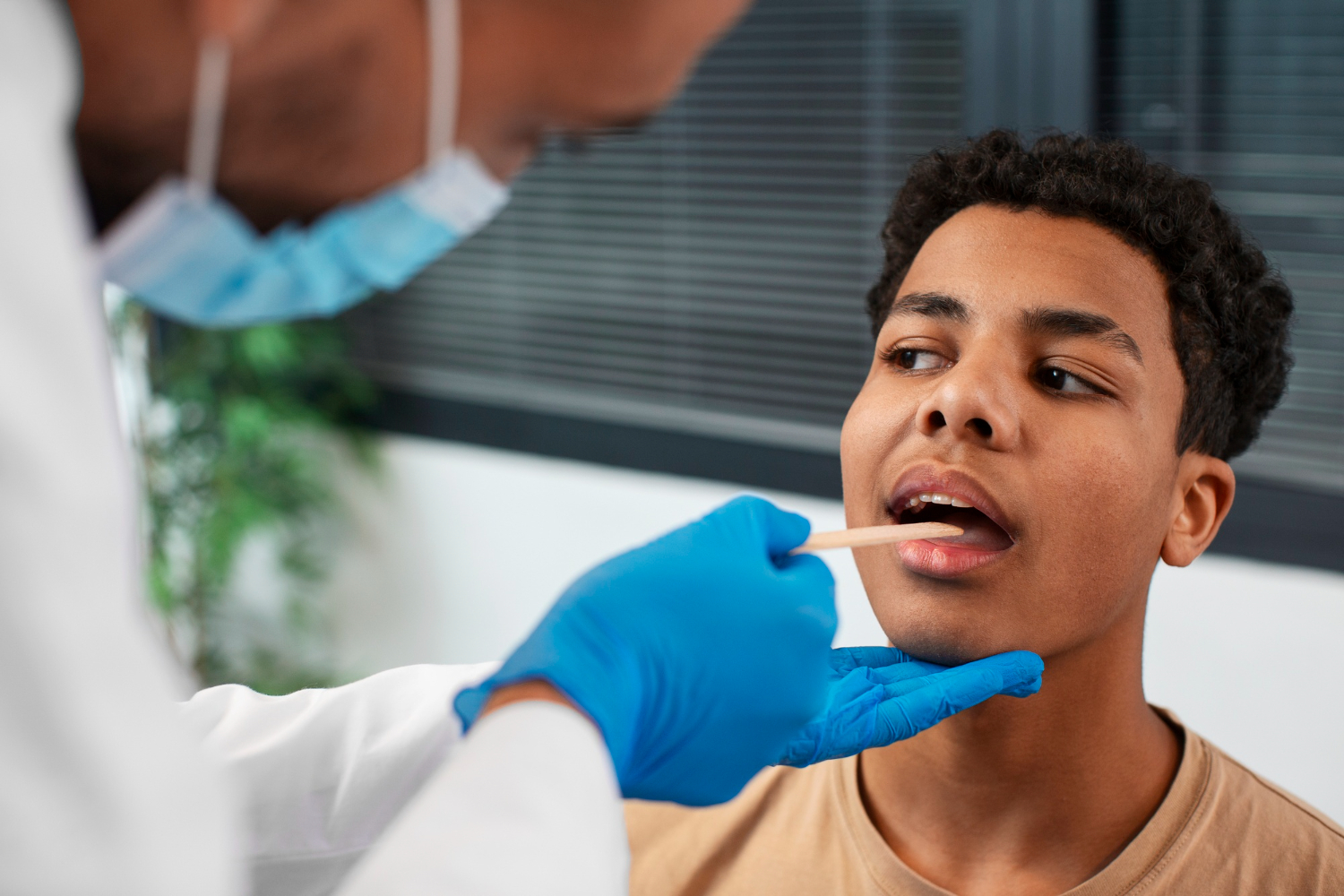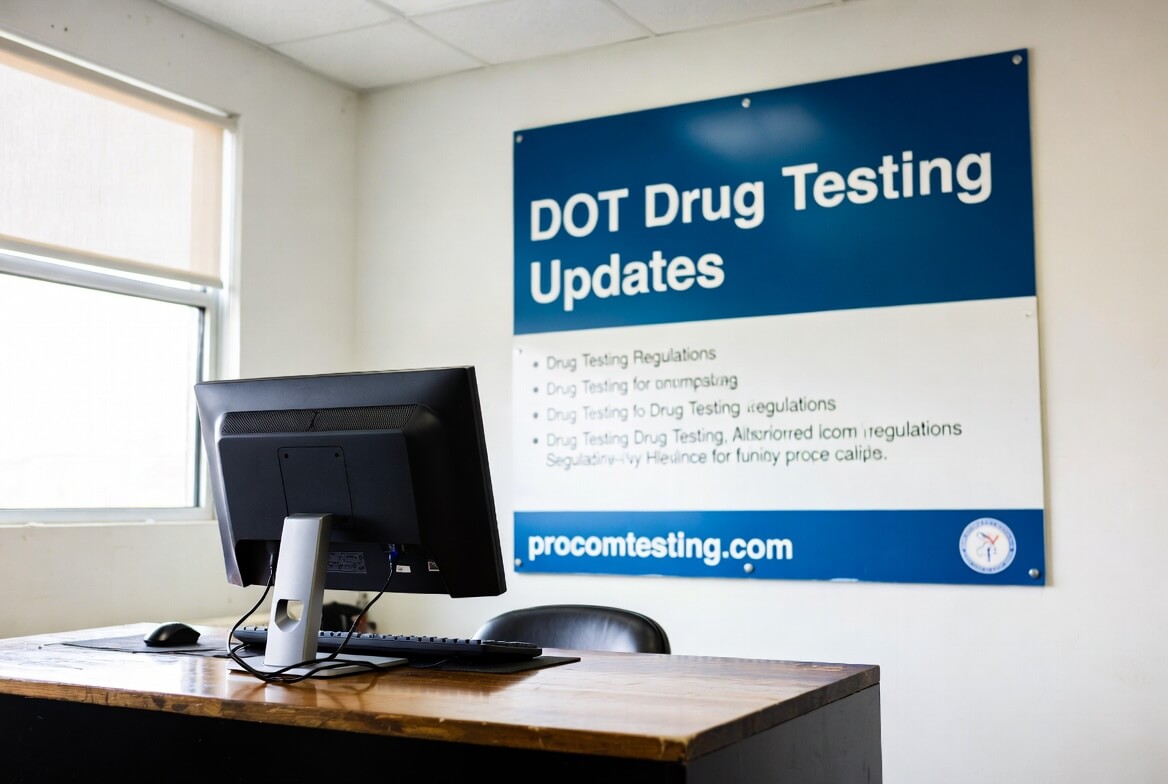Choosing the right drug testing method for your workplace is crucial for maintaining a safe, productive environment. Among the various drug testing methods available today, saliva and urine tests remain the most popular. But when it comes to workplace drug screening, how do you decide between a saliva drug test (oral fluid) and a urine test?
In this guide, we’ll explore the benefits and limitations of both testing methods, helping you determine the best choice for your workplace.
Key Takeaways
- Saliva drug tests = recent‑use insight + easy observed collection + low tamper risk.
- Urine drug tests = longer detection window + entrenched regulatory/legal acceptance.
- Match the specimen to your purpose: rapid post‑incident decisions vs. historical screening for hiring, return‑to‑duty, or monitoring.
Understanding Saliva Drug Testing
Saliva drug testing (oral fluid testing) uses a swab or collection device placed in the mouth to absorb oral fluid, which is then screened for the parent drug (and in some cases metabolites). Because parent drugs enter oral fluid quickly, often within minutes, oral fluid testing is especially useful when you need to assess very recent use that could impact immediate job performance or safety.
Advantages of Saliva Drug Testing
- Fast & Convenient: Collections take place virtually anywhere, jobsite, clinic, hiring event—without the need for a restroom, enabling rapid response after an incident or during time‑sensitive hiring.
- Recent‑Use Detection: Parent drugs appear quickly in oral fluid; detection windows are short (often up to ~24 hours, variable by drug and cutoff), making results more reflective of possible on‑duty or recent use.
- Observed Collection, Low Tampering: The collector and donor stay in view, reducing adulteration, substitution, and shy‑bladder delays common to urine testing.
- Regulatory Momentum: DOT has authorized oral fluid as an alternative testing methodology under Part 40 (implementation dependent on HHS lab certification milestones), signaling increasing institutional acceptance.
Need professional oral fluid testing in Colorado, or across your multi‑state footprint? PROCOM delivers on‑site and clinic‑based collections backed by compliant chain‑of‑custody handling.
The Urine Testing Alternative
Urine drug testing remains the industry standard for both regulated and non‑regulated programs because laboratories have decades of validated methods, established cutoff levels, and deep legal/forensic precedent. It also captures drug metabolites, which typically extend the detection window beyond what you’ll see in oral fluid.
Advantages of Urine Drug Testing
- Longer Detection Window: Depending on the drug, frequency of use, metabolism, and cutoff, urine may detect use across several days (and in some cases longer), making it effective for pre‑employment, return‑to‑duty, or follow‑up programs that require a broader historical view.
- Established & Scalable: Because laboratory urine testing is mature and widely adopted, it’s supported by standardized procedures, instrumentation, and large testing volumes, often lowering cost per test at scale.
- Regulatory Backbone: Urine remains the fully implemented specimen type across all DOT‑regulated testing while oral fluid infrastructure (certified labs) comes online.
Comparing Saliva vs. Urine Drug Tests
Choosing between a saliva drug test (oral fluid) and a urine drug test comes down to what you’re trying to accomplish, how fast you need results, your tolerance for collection hassle, and your risk exposure around tampering and litigation. Below is a deeper look at the critical decision points so you can match the specimen type to the outcome you want.
|
Factor |
Saliva Drug Test (Oral Fluid) |
Urine Drug Test |
|
Detection Window |
Short; strongest read on recent use—roughly up to ~24 hrs (drug‑dependent; some variation). Useful for post‑incident or reasonable suspicion. |
Longer; detects drug metabolites over days (sometimes longer) depending on substance, frequency, and cutoff. Good for pre‑employment & monitoring. |
|
Collection Ease |
Quick, observed swab—no restroom required; ideal for field, mobile, or event‑based testing. |
Requires private restroom; more procedural steps (privacy, shy bladder management). Less field‑flexible. |
|
Tamper Risk |
Very low—collector watches sample; minimal opportunity for adulteration/substitution. |
Higher; urine substitution, dilution, and adulterants are well‑documented concerns; requires validity checks. |
|
Result Speed |
Rapid screens available; lab confirmations typically fast due to small volume; good for real‑time decisions. |
Lab turnaround standard; POCT cups exist but non‑negatives require lab confirmation, extending timeline. |
|
Regulatory Status |
Authorized by DOT Part 40 but dependent on HHS certification of oral fluid labs before full implementation in DOT programs. |
Fully implemented and audit‑proven across DOT testing; entrenched in many employer policies. |
|
Best Use Cases |
Post‑incident, reasonable suspicion, pre‑shift/fit‑for‑duty, mobile crews, when rapid recent‑use insight matters. |
Pre‑employment, return‑to‑duty, follow‑up/monitoring, compliance records needing extended lookback. |
|
Donor Experience |
Non‑invasive, no privacy stress, faster throughput. |
Some donors experience privacy concerns, shy bladder delays, or need hydration holds. |
Which Test is Right for Your Workplace?
Match the specimen type to the decision you need to make:
- Need to know if someone just used or may be impaired on duty? Go with a saliva drug test, fast, observed, and tuned to recent use.
- Need to review a longer history before hiring or returning someone to safety‑sensitive work? Use urine testing for its extended metabolite detection window.
- Operate in safety‑sensitive transportation roles under DOT? Continue urine collections for regulatory compliance while preparing procedures and vendor relationships for eventual oral fluid rollout once HHS certifies labs.
PROCOM can help you blend both. Many employers adopt a hybrid approach: urine for pre‑hire/return‑to‑duty, saliva for post‑incident and reasonable suspicion. We’ll help you design, implement, and manage it across Colorado locations and nationwide partner sites.
Quick “Should I Use Saliva or Urine?” Decision Snapshot
- Use Saliva When: You need immediate insight into very recent use; collection must be observed; sites are remote or mobile; you want to reduce cheating risk.
- Use Urine When: You need a longer detection history for hiring, compliance, or follow‑up; your legal environment already references urine testing; you’re operating under current DOT rules.
- Planning for DOT Oral Fluid? Build relationships with providers (collectors + labs) now so you’re ready when HHS‑certified oral fluid labs reach full availability.
Relevant External Links:
- National Institute on Drug Abuse – Drug Testing
- Substance Abuse and Mental Health Services Administration (SAMHSA)
- SAMHSA – Oral Fluid Specimen Collection Handbook
- DOT ODAPC – Drug Testing Laboratories / Part 40 Oral Fluid Update
Choosing the Optimal Drug Test Method
Deciding between a saliva drug test and a urine test depends largely on your workplace’s unique requirements, whether immediacy, cost-efficiency, or long-term compliance is your priority. PROCOM Testing offers both saliva and urine drug testing services, ensuring your organization’s needs are fully covered.
To discuss which method best suits your workplace, contact PROCOM today and maintain a safer, more productive workplace environment.
FAQs About Saliva Drug Testing
How accurate are saliva drug tests?
How quickly can saliva tests detect drugs?
Certain drugs become detectable in oral fluid within minutes; practical detection windows for most workplace programs are roughly up to ~24 hours (drug and cutoff dependent).
Can saliva drug tests be cheated?
Observed collection means the donor can’t easily substitute or dilute the sample; known oral fluid adulteration attempts have far lower success rates than urine tampering when standard protocols are followed.
Are saliva drug test results legally defensible?
Lab‑based oral fluid testing performed under recognized guidelines (chain of custody, cutoff levels, confirmation by mass spectrometry, MRO review) is increasingly accepted in workplace and regulatory contexts, and is codified for future use in DOT testing.
What’s the detection window difference between saliva and urine?
Oral fluid reflects recent use (hours to ~1 day), while urine detects metabolites over a longer range—several days or more depending on drug type and usage patterns.
When should I choose saliva over urine in my policy?
Select saliva for post‑accident, reasonable suspicion, pre‑shift “fitness,” or when rapid, observed collection in the field is necessary; keep urine for pre‑employment or situations where a longer lookback is important.
Does PROCOM provide both saliva and urine testing across Colorado?
Yes. We perform on‑site and clinic‑based collections for oral fluid and urine drug testing in Grand Junction, Pueblo, Glenwood, and through a national partner network for multi‑state employers. (Internal link suggestion:
How do I transition to saliva testing without disrupting our current urine program?
Start by defining use cases (e.g., post‑incident only), secure a qualified collection process, confirm lab/MRO support, update policy language, and communicate rollout steps to supervisors. PROCOM can walk you through each phase.




